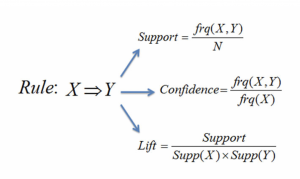Covid-19 has changed our lives in many ways, one thing remains constant during this time, “change”. Many organizations paused and had to re-imagine how they will conduct business moving forward. One framework I’m always reminded of is VUCA (Volatility, uncertainty, complexity and ambiguity). However, for many B2B organization’s that focused on “traditional-selling” face to face/relationship based had to transform overnight to an omni-channel approach leveraging digital/remote-selling models unfamiliar to most non-tech companies. This article will focus on a creating great customer experience’s regardless of channel.
B2B needs to implement an omni-channel sales approach
“Change almost never fails because it’s too early. It almost always fails because it’s too late.” – Seth Godin. If your organization is not selling online, it’s not too late but don’t delay, START NOW! I’ve always loved the Nike approach, “Just Do It”. B2B organizations can learn from B2C organizations, people are people and expect the same experience they have online with large e-tailors such as Amazon or Wayfair. How can a B2B organization create this type of experience regardless of channel? Simple, deploy an omni-channel strategy whereby all customer touch-points look (more than just being online) and feel just like the traditional approach your customers are accustomed to regardless of where they decide to purchase.
Here are some ideas to get this approach started.
- Get products to transact online, Omni-channel isn’t always about being online, but this has become more important than ever due to remote selling
- Employ digital marketing campaigns to generate demand and build a digital sales funnel, many digital tools available start simple with email campaigns
- Enable customers to self-serve, this will also free-up resources to focus on adding more value
- Focus on customer experience, journey map a transaction with a customer, review the flow of a successful sales cycle and replicate this experience online
How to find your segments and improve customer experience
Without getting too technical or into in-depth machine learning. You can start with a simple hypothesis’ test or analytics techniques. For example, if you have certain transactional behaviours from your customer database you can come up with basic association rules otherwise referred to as market basket analysis. You can try this without having to do the math by reviewing counts and using intuition.

Image Source: TechLeer (https://www.techleer.com/articles/238-concepts-behind-association-rule-mining/)
Here’s a simple example:
Assume there are 1,000 customers
100 of them purchased cheese, 80 purchased wine and 60 purchased both.
purchased cheese => purchased wine
support = P(Cheese & Wine) = 60/1000 = 0.06
confidence = support/P(Wine) = 0.06/0.08 = 0.75
lift = confidence/P(Cheese) = 0.75/0.10 = 7.5
Support simply tells us how frequently the items occur together, while confidence confirms the probability of the two items to be purchased together so in our case 75% likelihood to be purchased together. Finally, the lift, here you want a lift greater than 1 as this is the strength of products occurring together.
This is just one of many techniques you can use, when you bring in demographic, geographic and other customer profile attributes you can market bundled offerings more efficiently and effectively improving overall experience. Ultimately, you can determine that if Customer123 buys Cheese they are more likely to buy Wine and if Customer123 has similar attributes to Customer456 than you can start building hypothesis tests and marketing the offering that Customer123 purchased to Customer456.
One of the simplest methods of marketing and testing your hypothesis is email or social media ex. LinkedIn/Facebook/Instagram. Check-out Amazon and Netflix which have mastered recommendation engines and how well they are able to deliver products and content that feels like it was meant just for you, that’s personalization the holy grail of segmentation.
Overcoming challenges
Resistance to change is one of the most real and on-going issues in most organizations. Traditional organization structures were not built to sell/market online or structured for omni-channel commerce. This is okay but if you are a leader in your organization coming from product, sales, marketing or any other function, do not settle with the status quo, challenge and change the way the organization conducts business. Focus on customer experience, for me it’s always been about empathy, if you truly put yourself in your customers shoes, experience what they have to go through to do business with you, you’ll discover quickly why most organizations need to modernize their customer experience with the help of digital tools and technologies.


